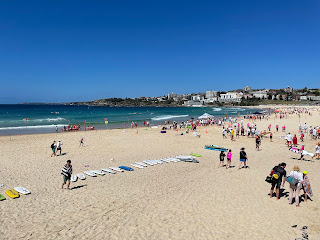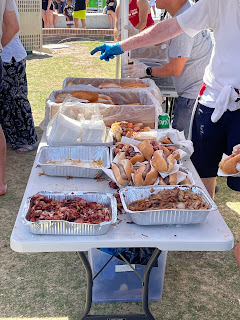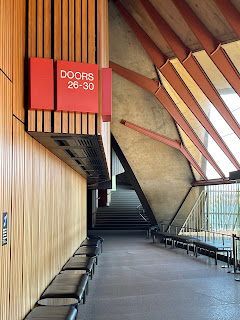Back in early November, I came across a deal on cheap flights. Direct from Minneapolis to Phoenix in mid-February. Minnesota winters being what they (normally) are, it looked like a good opportunity to escape the cold and snow. We booked the flights, got a pretty good deal on a rental car, and set about finding places to stay through Hotel.com.
The original plan was to drive up to Sedona, because neither of us has ever been there and it's supposed to be very pretty. We wondered why it was so difficult to find lodging, but figured lots of northerners would be looking for respite from the cold, like us. We got things arranged.
Then Minnesota had the "Winter That Wasn't." The warmest December on record, followed by the warmest January on record. No snow, to speak of. And what little snow there was had melted.
As the date drew nearer, the forecast for Sedona got worse and worse -- cold, snow, and wind. Meanwhile, the forecast for the Twin Cities kept getting better and better -- a string of record high temperatures. It was going to be warmer in Minnesota than in Arizona!
We canceled Sedona and managed to find a little efficiency apartment near Old Town Scottsdale. It was a bit cramped, but very convenient in every other way. Upon arrival on Sunday, we picked up a nice, almost new Nissan Sentra -- an upgrade from the Versa we had reserved. Then we drove immediately to Papago Park to hike the Double Butte Loop Trail, a nice, easy 2.5 miles in beautiful sunshine and temps in the 60s. Very nice!
The following day was also sunny and warm, so we drove to the Phoenix Mountain Preserve. Our plans changed when the volunteer at the Visitor's Center suggested the Shaw Butte Trail. He said it would be easy with "just a little elevation" and that the trail is "very, very well marked." The elevation came all at once -- straight up under a warm sun. And at the top, we got lost because of poor trail markings. Fortunately, Mary flagged down a woman of about our age who looked like she knew where she was going. She was very friendly, and since she was parked in the same lot we were, she walked with us all the way back. We'd have never found our way without her. We were exhausted, but it was a good hike, nevertheless.
 |
| We made it all the way up to the antennas! |
Mary had researched a lot of restaurants with good "happy hour" deals, so each night we ate half-price apps for dinner, along with discount drinks. We ate very well, but didn't get overstuffed with full restaurant meals.
Tuesday was supposed to be rainy all day, so we opted for an indoor activity. There were some showers off and on, but the day wouldn't have been a washout. Nevertheless, we spent most of the day at the Musical Instrument Museum (MIM). This museum was excellent, and we wound up spending about five hours there.
Our Phoenix apartment was only good for three nights. A big golf tournament in town, we discovered, was what had made it so difficult to find reservations. Who knew that golf was such a big spectator sport? We had to get out of town, and since we had canceled Sedona where it was snowing, we went south to Tucson instead.
We visited Mission San Xavier del Bac, which was mildly interesting. We then drove to the University of Arizona campus. Tucson gets heavy rains so seldom that they don't bother putting in storm sewers. Thus, when big rains do occur, the water floods the streets and sits in huge pools on the roadways long after the rain has stopped. We got our feet soaked crossing streets. One of the campus museums we had hoped to see was closed, but we saw another and it was even a free day! No admission charge.
The following day, after most of the street flooding had abated, we drove to the western section of Seguaro National Park. The weather was perfect and we did several miles of hiking among the big cactus (cactai?). Driving back to Tucson, the rains came as a deluge as we drove I-10. Traffic slowed to a standstill as visibility was near zero. Fortunately, we weren't in a hurry.
We decided to repeat the Double Butte Trail at Papago Park, then drove to the opposite side of the park (technically in Tempe) to visit the Arizona Historical Society Heritage Center. This was a pretty nice museum that doesn't seem to get as much attention as it deserves.
Barry Goldwater's amateur radio station was a highlight for Mark.
All in all, the weather was nicer than forecast and the trip was a nice break. It just a break from winter in Minnesota, because it's the Winter That Wasn't.
























































